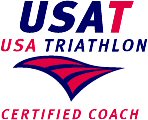Feeling Ill? Exercise Do's and Don'ts
You're tired and achy. You must be getting a cold or maybe even the flu. Should you tell your trainer you need to work extra hard to build up your immunity, shift your workout to a lower intensity or skip exercise altogether until the bout passes? Most of us get hit with allergies, colds and other minor setbacks throughout the year, but few hard-and-fast rules exist regarding exercise and illness. The next time you're sick, refer to these do's and don'ts to help determine whether working out will help or hurt your condition.
1. DO a check of your symptoms first. If you have above the neck signs, such as a runny nose, sneezing, or a sore throat, moderate exercise is generally safe as long as you do not have a fever. You can resume intense workouts as soon as symptoms disappear. If you have below the neck signs, such as extreme tiredness, muscle aches, vomiting, diarrhea, chills, swollen lymph glands, or a hacking cough, allow at least two weeks before returning to intense training.
2. DON'T exercise with a fever. Fever (a body temperature above 98.6 degrees Fahrenheit) signifies you are doing battle with a virus. Exercising under these conditions increases risk of dehydration, heatstroke, and even heart failure.
3. DO modify your exercise intensity. If you have cold or flu symptoms, you cannot power away your ailment through more intense workouts. In fact, you may make your illness worse. A simple sore throat, for example, could indicate an infection, and your immunity to fight it will be reduced if you continue vigorous exercise. Moderate exercise, however, is fine for mild cold symptoms as long your heart rate and body temperature do not increase excessively.
William A. Primos Jr., MD, and James R. Wappes in The Physician and Sports Medicine (January 1996) suggest working out at half speed for about 10 minutes. If you feel fine, you can increase your intensity. Stop exercising if you feel dizzy, nauseous or experience any other exacerbated symptoms.
4. DON'T over train or stress out. Over training can lead to suppressed immune function and exposure to opportunistic infections, notes medial exercise specialist Michael Youssouf, MA. In addition, attempting new or harder activities can lead to failure. Such stress may influence your immune system. Choosing activities you enjoy and can do consistently may improve your exercise adherence and immune function.
5. DO exercise to keep your immunity strong. Researchers have found a link between regular exercise and improved immune function response. Primos and Wappes note that during moderate exercise immune cells circulate more quickly through your body and are better at destroying viruses and bacteria.
6. DON'T infect or become infected. Be alert to air-quality conditions at your training facility. During cold and flu seasons, exercise during less-crowded hours to avoid catching or transmitting viruses. Consider outdoor activities if weather conditions permit.
7. DO use common sense. Ken Baldwin, president of Premier Fitness in Cambridge, Massachusetts, advises ill clients to stay home, rest, and drink plenty of fluids. It's difficult to exercise when you're coughing and sniffling.
8. DON'T let a temporary illness stop you permanently. Focus on flexibility, stress management, and mind-body awareness during down times, Youssouf suggests. Moreover, plan how to resume your activity program as soon as you can rather than letting yourself drift into sedentary habits.
9. DO return to exercise when you're ready. Making up for time missed in the gym can drain your immune system all over again. Exercise for two days at a lower intensity for each day you were sick, Primos and Wappes advise. Give your body time the time it needs to recover.
10. DON'T hesitate to consult your doctor. Even if an illness is minor, check with your physician if you are seriously concerned. As always, better safe than sorry.
Article courtesy of IDEA Health & Fitness Association. Reprinted with permission.
Personal Training and Fitness Articles |
Wellness and Fitness Handouts
Nutrition Articles and Handouts








